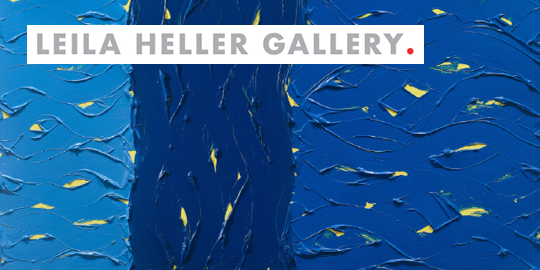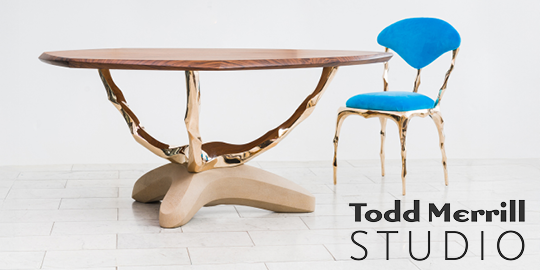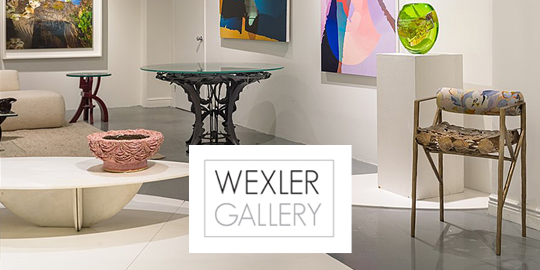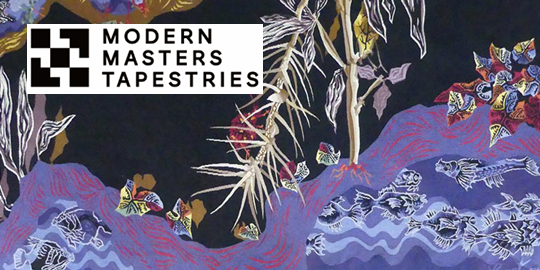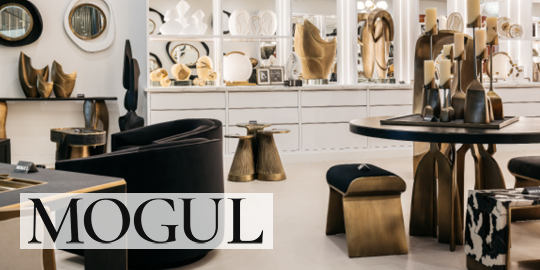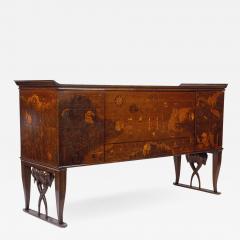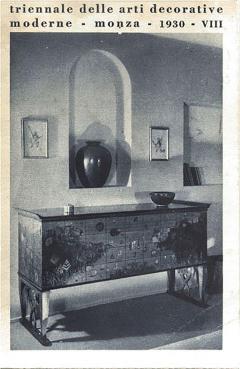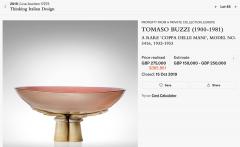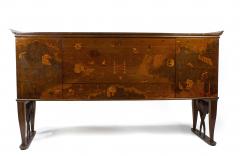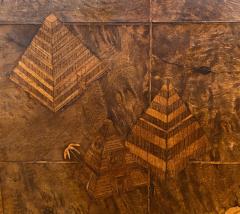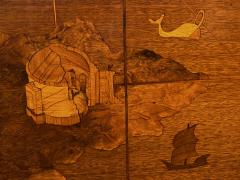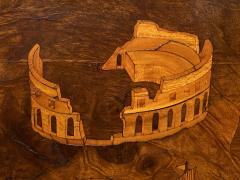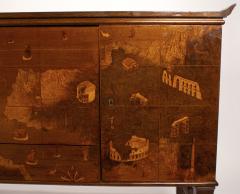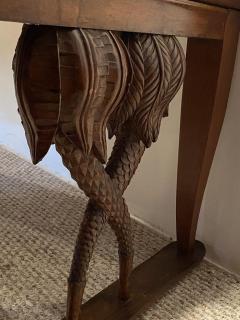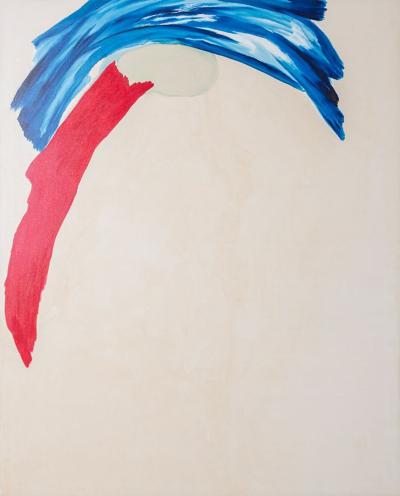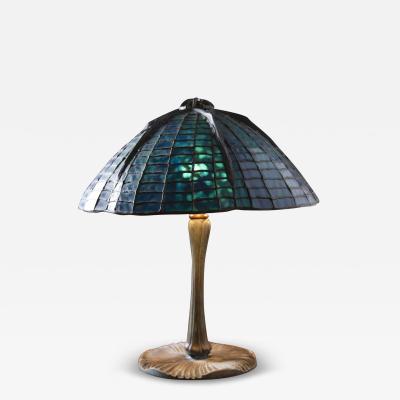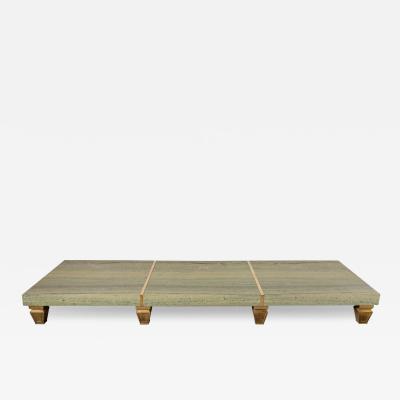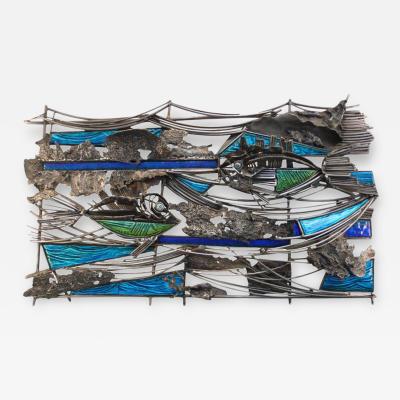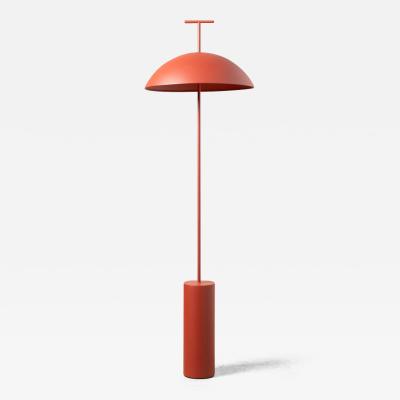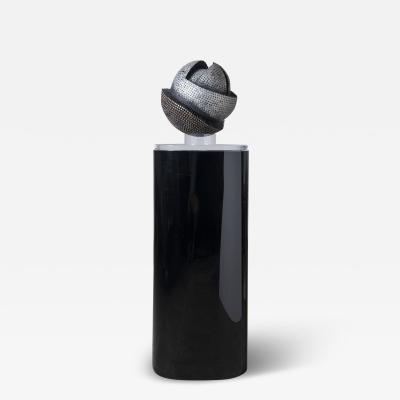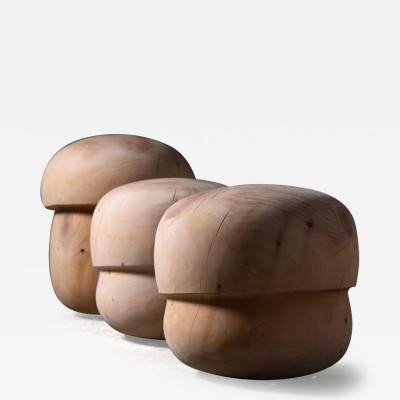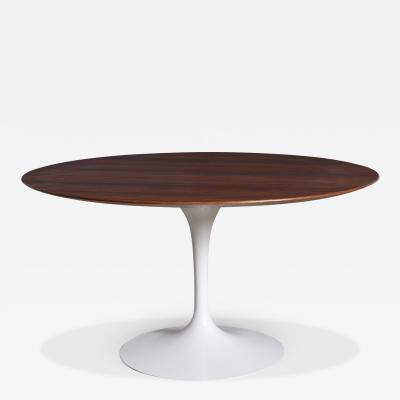Early and important Tomaso Buzzi dining room server cabinet embellished with ornately detailed marquetry depicting the entrance to the ‘Bosphorus Straits’. The artwork is an imaginative rendition of one of the most economically and geopolitically important locations on the planet, namely, the vital trade route between East and West through the ancient city port of Constantinople or modern-day Istanbul. The piece reflects the influences of various historic Empires in the region, including Egypt in North Africa to the North West, and The Greek and Roman Empires to the North East, and the Turks to the East. The scene portrays a time when countless battles occurred in these provinces in order to control the flow of Maritime trade between the Continents of the Northeastern Hemisphere and The Orient or the Far East, along the ‘silk road’. The illustration includes numerous architectural icons including the Pyramids of Giza, Roman Colosseums, Roman Aqueducts, Greek Acropolis style buildings, The Galata Tower, The Obelisk of Theodosius, Rumelifeneri Castle, and The Blue Mosque of Istanbul amongst others. A variety of seafaring vessels, marine life, and geological landmarks are also included in the panorama.
This masterwork was executed by Buzzi during his tenure at the school of arts and crafts in Sao Paulo Brazil in the late 1920s. This was during the time he joined the "Novecento Milanese" Group and began to collaborate with Gio Ponti on the newly developed Design Magazine, Domus. The cabinet was showcased as a centerpiece in the 8th Triennale of Modern Decorative Arts in Monza, Italy in 1930. It is well documented and retains the original brass plaque from the Institutional Authority of the Arts in Brazil. A copy of a promotional postcard from the exhibition signed by Buzzi and featuring this cabinet is part of the Buzzi Archive.
Crafted from indigenous Brazilian hardwoods
1928-1929.


